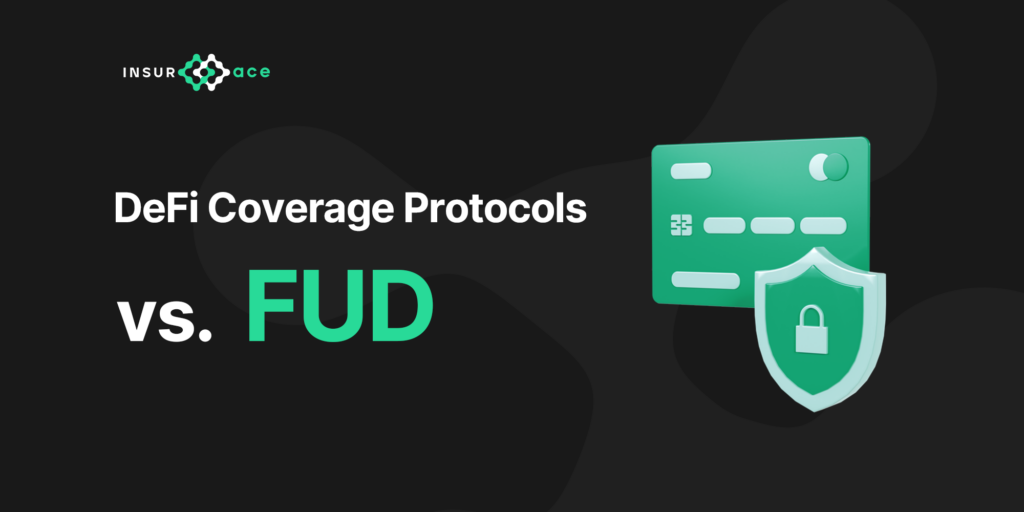Just as every industry has its own mini vocabulary, the Blockchain world has developed its own specialized glossary. The DeFi vocabulary ranges from technical concepts to informal and colloquial words. And One of the most popular among them is “FUD” – Fear Uncertainty and Doubt. It is a concise description of apathy and fear of the “unknown” that has perennially gripped the cryptocurrencies & Decentralized Finance world, preventing it from reaching mainstream adoption.
Within barely 10 years of existence, Blockchain technology has reached 300 million users globally, with the cryptocurrency markets climbing up to a $3trn all-time high in November 2021.
But despite this significant success over the last decade, the blockchain industry continues to struggle with a slew of hacks, fraud and virulent volatility all of which have combined to create a massive PR nightmare for the industry.
TL:DR
— FUD Stands for Fear, Uncertainty & Doubt
— Market Volatility, DeFi Hacks, Network Security, Climate & Energy Concerns are the Major Sources of FUD i.e. negative perceptions – about the Crypto Industry.
— FUD has led a massive PR nightmare, and discourages new entrants from adopting cryptocurrencies.
— DeFi Protection Protocols are providing effective solutions to eliminate these concerns.
— The Boston Consulting Group now projects the blockchain industry to grow rapidly from 300m to $1bn users by the year 2030.
What is FUD in Crypto?
FUD is an acronym for Fear, Uncertainty & Doubt. It generally refers to a major concern or negative event that discourages new entrants or causes investors to shy away from HODLing existing Crypto assets. Some might argue that FUD is crypto-native word for “bad PR”, however the word has been used in different contexts.
/FUD/ – NOUN – i.e. stop the FUD. In this context FUD denotes a benign strategy that is being deployed to influence or sway the perception of the general public against a certain crypto entity i.e Cryptocurrency, DeFi product, or the cryptocurrency market in general by spreading negative, misleading or false information.
Sometimes, FUD is used by the crypto community to describe the skepticism of cryptocurrency that is temporarily bearish for the crypto market. i.e. The TerraUST crash caused major FUD for the crypto industry. Similar words include “FUDster.” which is used to describe a person who deliberately spreads negative information about a specific Crypto-related entity or the crypto world at large.
Some of the major antagonists and alleged crypto FUDsters include high profile personalities like Warren Buffet, and economist Paul Krugman, who are antithetical to proponents like Elon Musk and Mark Cuban.
Major Causes of FUD in Crypto & Solutions Offered by DeFi Coverage Protocols.
- Market Volatility – Sustainable Investment Returns
- DeFi Hacks & Smart Contract Failures – Coverage
1. Market Volatility.
Market volatility is one of the biggest reasons for negative perception about the blockchain industry. In spite of the high rate of adoption and long-term growth trends, the trading volumes and investor interest in crypto vary significantly over short periods. This causes the value of underlying cryptocurrencies to fluctuate significantly.

Image by Mediamodifier from Pixabay
How to Calculate Crypto Volatility — Standard Deviation
According to data analytics experts, Standard deviation is the ideal statistical measure of volatility – which denotes the degree of variance between price levels of a specific asset class or market index over a given period. (Typically, the higher the volatility, the riskier the asset class.)
Bitcoin’s daily volatility = √(∑(Bitcoin’s opening price – Price at N)^2 /N)
For instance, when you consider the Standard Deviation of the Crypto markets between 2018 to 2022, the mean monthly return deviation for Bitcoin & Ethereum 76% and 65.11% respectively. Even though the global crypto market capitalization has grown from $128 Billion to $1.1 trillion within the same period, this high deviation depicts significant fluctuation of returns.
Blockchain maximalists can rightly argue that the variation in short-term trading volume, valuation and shaky investor confidence can be largely attributed to the nascent & novelty of the blockchain industry. But Volatility still remains a major concern for the neutrals. Especially when it is juxtaposed with similar industries like the Commodities, Forex and Stock markets.
Solution offered By DeFi Coverage Providers — Sustainable Investment Returns
To help mitigate the massive FUD that emanates from market volatility, DeFi coverage protocols offer sustainable investment platforms. Users of these services get to earn significant passive income which can help them to cushion the effects of fluctuation in crypto market prices.
On the InsurAce.io platform for instance, users can enjoy significant returns through an innovative Investment Portal and Mining Program.
The 2021 Global Crypto Adoption Index shows that Crypto penetration globally is up 880% since 2020. And within the same period Global Crypto market cap has grown by 200%. This points to the fact Blockchain technology has had a revolutionary impact on various sectors of the global economy. From the financial system, to art, sports, and gaming.
Nonetheless, the underpinning cryptocurrency industry is still being heavily criticized for its apparent high prevalence of volatility in the short-term.
With Sustainable Investment Returns that DeFi Coverage Protocols provide, users of DeFi products can earn sizable income while also helping to enhance the overall coverage capacity of the DeFi protection industry. Both outcomes contribute significantly towards the soundness and stability of the Blockchain industry.
2. DeFi Hacks & Smart Contract Failures
Although blockchain technology is revolutionizing how we carry out financial transactions, and has emerged as a worthy opponent to the traditional banking system, it is also incredibly susceptible to hacking. In 2021, DeFi hacks accounted for 76% of major hacks that occurred globally. The spate of attacks and smart contract exploits constitutes a major cause of negative perception for the crypto industry.
How Do DeFi Hacks Work?

Blockchain-based currencies and decentralized finance services are unique technological protocols that use cryptography to secure transactions and store ownership information.
The anonymity and privacy features of blockchain technology makes it unusually attractive for Hackers to carry out nefarious activities anonymously.
Hackers exploit security vulnerabilities in cross-chain bridges, third-party wallets, and DeFi protocols to steal millions of dollars worth of crypto assets.
How do Smart Contract Failures Occur?
Smart Contract Failures & Exploits present a slightly different form of security hazard. This is because, even without a deliberate attack, vulnerability from a simple error or bug in the code-base may lead to massive losses for users.
A smart contract is a type of code that allows users to interact with blockchain protocols to verify and execute transactions autonomously. Its three main attributes, the ability to express real-time value, transparency and immutability are fundamental to the operation of smart contracts. However, these attributes also make them a unique security hazard.
Solutions offered by DeFi Coverage Protocols — Coverage for Crypto Assets
In the early days of the crypto industry, there was a massive negative perception that the industry was at the mercy of hackers and that there was no iota of reprieve for DeFi users that fall victim and lose funds to these DeFi hacks and Smart contract failures.
However, since 2020, DeFi Protection protocols like InsurAce.io have emerged to provide much needed succor for Crypto investors and users. InsurAce offers Coverage products that enable crypto Investors to claim a full-refund if they fall victim to an attack by Hackers, or Smart contract exploits like flash loans or even a Stablecoin De-peg.
The negative perception about the DeFi industry improved significantly in 2022, as InsurAce swung into action to save victims of a flash loan attack on the Elephant Money protocol. And later in May, InsurAce.io the rescue once again, paying out Coverage claims worth $11.7m to 155 investors who had lost funds to the infamous TerraUST crash.
Final Thoughts
Risk and Uncertainty is an inherent part of investing in any sector. and the blockchain industry is no exception. The emergence of DeFi Coverage protocols like InsurAce.io has done a lot to dispel the FUD factor in the crypto industry.
Through sustainable investment returns and providing Coverage for digital assets hosted on the blockchain — DeFi protection protocols provide a much-needed safety net for retail & institutional Investors in the blockchain space. The Boston Consulting Group now projects the blockchain industry to grow rapidly from 300m to $1bn users by the year 2030.


